How Are Race Horses Trained?
A punter who takes their horse racing betting seriously will want to know as much detail as possible about the horse they are considering backing.
This will include who trained them, who is riding them, how they have performed in the recent past (especially on the course they are going to be running at), any handicap, headgear being used, and plenty more besides.
But few punters, even those who love to do their research, will know much about the training process of a race horse before they get to their first race.
All trainers have their own methods, and those at the very top of their game will be extremely careful not to let any of their methods or secrets get out into the public realm, but we can at least understand the general stages of training a budding race horse will go through before we first see their names on a race card.
Breeding
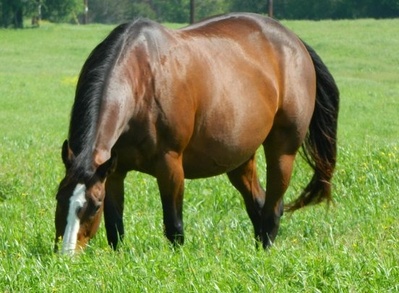
It all starts before the horse is even a twinkle in their sire’s eye.
Race horses are all about breeding, and stables go to great lengths to match a high calibre stallion with a worthy broodmare in an attempt to breed a genetically superior horse.
Just like any sort of animal breeding, the pedigree of the parents is important, and the idea is that two genetically strong horses with excellent racing records will create a foal of equal or even greater abilities, once trained.
A heck of a lot of money is paid to the owners of successful stallions who are now enjoying stud careers, who travel up and down the country being matched with willing broodmares. They can command fees in the hundreds of thousands for their services, covering more than 100 mares per year in some cases.
Once the dam is pregnant, great care is taken to look after her and of course to look after the foal once it is born.
The owner then has a choice to make; whether to keep the horse for their own stable and train it up to race for them, or to sell it on as a Yearling.
In either case, the training begins at a very young age.
A Year Old
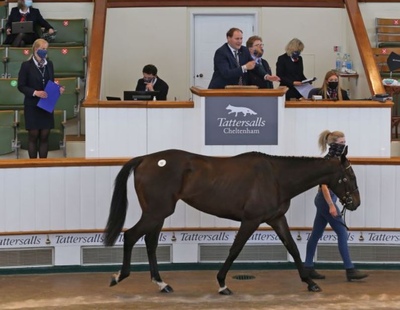
A newly born foal needs to learn the basics first, and as such they will simply do a lot of grazing getting used to running around on their own four legs to begin with.
However, horses that are being sold will need to start some sort of training fairly early on as the sales tend to happen when the foal becomes a yearling.
Foals that are pegged to be trained in house and race for the person or stable that owns them will tend to start breaking or pre-training at a similar time, so they will also need to be made ready for that.
This early stage of training is little more than helping the horse become accustomed to handling, so they will be exposed to simple things such as:
- Exercise and walking with a human (being led)
- Being groomed (washed, brushed, hoofs cleaned, etc)
- Lunging (walking in a circle)
- Tack (light equipment being worn)
- Stabling (life in a stable environment)
This all helps to build the foal’s confidence in human interaction, which will make the next stage of their training much easier to get through, and in the case of foals going to the sales, will help them walk up well and hopefully achieve a good price based on their potential.
The foal’s diet, nutrition and hygiene are also given careful attention, as the right balance of food and exercise is essential to their successful progress, and their good health is an obvious point of importance.
Pre-Training
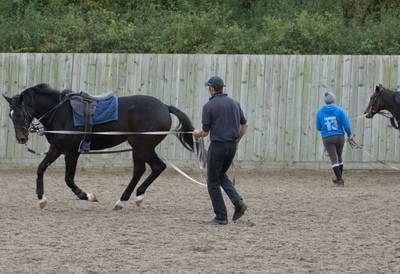
Whether the foal was sold or kept, it is now a yearling and ready for pre-training or breaking – which sounds awful but just means making the horse rideable.
This can take place at a regular training yard but pre-training yards are becoming more common, and they tend to be smaller and calmer than the hustle and bustle of a busy training stable. This just eases the young horse into the training environment without overwhelming it, rather then dropping them in at the deep end.
At this stage the horse will tighten up any skills not already fully developed when it was a foal, as well as wearing full tack before getting used to carrying a rider on its back.
This can look quite funny as the process of getting from the ground to a horse needs to be introduced slowly, so to begin with the work rider will just jump up and down next to the horse so it gets used to the feeling, before then applying some pressure to the horses back, then lying across the horses back, and eventually getting into the saddle.
The jockeys doing this sort of work can sometimes be in for a rough ride, since untrained horses can buck and attempt to throw the rider off.
It can take a good few months to break a horse, and to get them moving and holding their heads correctly, so it’s slow and delicate work that requires patience and understanding from the trainers, not to mention an expert understanding of a young horses’ behaviour.
Once this has been achieved and the horse is happy to accept a rider and do some trotting and maybe even some cantering, training proper can begin at a yard, and the horse will start to show signs of its potential in different areas of racing.
Race Training
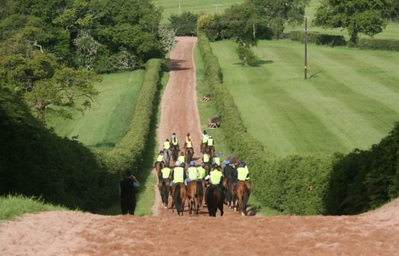
In the same way that a human being can be light or heavy footed making them better at some things than others, a horse has their own unique strengths and weaknesses too.
Some might do well at a quick pace over shorter distances but lack the stamina for longer races, while others might better suit a steady speed over distance; some might move like lightening on good ground while others might be comfortable in more muddy conditions – these sorts of things will all start to become evident as their training progresses.
This tends to start with cantering slowly on the gallop until the horse’s fitness has improved and they are looking stronger. Around 3 months of this should see them ready to start fast work, at which point the trainer can gauge each horse’s natural abilities, and can begin to make a plan for their future.
Horses all have their own training regime and schedule, and when it becomes clear what sort of races they will be running in the training is adapted to sharpen the specific skills they will need. So if a horse is going to be running a longer race their training will reflect this, with the length gradually increased until they are at the right level to go the distance, and the rider will work with the trainer to have the horse running at the right sort of speed too.
Other aspects of training include getting the horses accustomed to racing next to each other, so bumps and such do not knock their confidence, as well as getting them acclimatised to the starting gate and the hustle and bustle of the start of a race (in regards to those training for flat racing).
Sometimes, horses that are yet to race will even be led out to be amongst the runners at the start of a real race just so they have the experience of that environment before they have to do it for real.
Much of this training takes place in the early morning though, before the days racing begins and the trainer’s attention is diverted to horses that are already competing at various tracks across the country.
Horses that are racing will continue to train, especially if they have a race coming up that requires specific skills or abilities to be sharpened or improved. Once their careers are established it is all about keeping them in form and even improving their abilities if possible.
Equipment Used in Horse Training
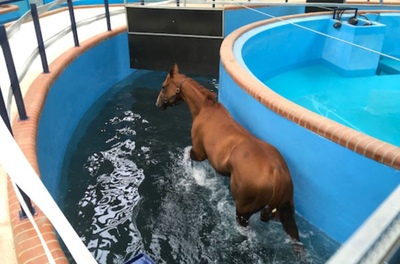
As well as the obvious equipment like a saddle, mouth piece, lead rope, etc., training yards will often invest in bigger or more expensive ‘big ticket’ pieces of training equipment to get the best from the horses they train.
These tend to be much more specialist and fewer punters will know that they even exist, let alone have seen them in action.
For a training stable though, the more they can offer their clients the happier those clients are likely to be, and it’s likely that their services will be recommended to others too.
It makes sense then for a training yard to invest in as much specialist equipment as they can.
These might include:
- A Walker – This job can be done by a human, but there are also machines like treadmills designed for horses, to warm them up and cool them down after a hard training session.
- A Gallop – This is actually a straight stretch of track rather than a piece of equipment, but it is designed to allow the horse and rider to concentrate on staying straight and well positioned, so no steering will be needed. There may be a few different gallops with alternative surfaces underfoot too.
- Lunging Ring – An enclosed round pen where the horse can exercise in a safe confined space, and work with a trainer who will give them simple instructions which they will learn to follow.
- Automatic Exerciser – With variable speed setting, the exerciser can be used to give horses a run without the need for a rider. They are a circular or octagonal shape with individual sections for around 4 horses to work at the same time.
- Weighbridge – Just like scales you might have in your bathroom but much bigger, for weighing the horse.
- Swimming Pool – Believe it or not, horse sized swimming pools exist to allow horses with leg problems or injuries to continue training without putting stress on the muscles and tendons that might need time to heal.
- Starting Stalls – A set of stalls is useful since many horses will need to get used to entering them and having the door closed behind them. They can also train the horses to leave the stalls at speed, as they would need to at the start of a race. This can be one of the hardest parts of a horse’s training, especially if the horse is nervous.
- Poles/Barrels/Jumps – A horse that is going to be a National Hunt racer will start training for jumps at about 2 years old. They will start out jumping poles or barrels or something similar, before moving on to jumps and fences which the training yard will have set up.
There may be other bits and bobs used too, but these are some of the most common things used for training horses, outside of handheld equipment.
